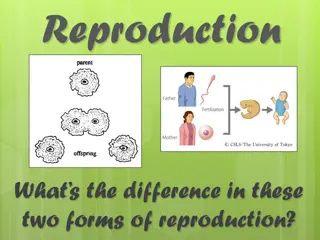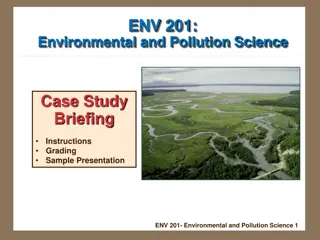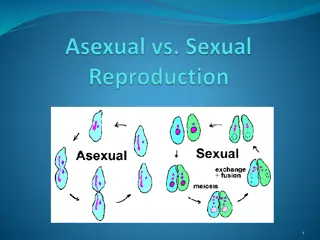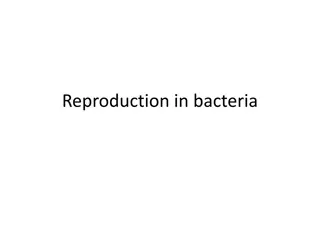Reproduction Processes of Eagle, Dolphin, and Giraffe Explained
Eagle, dolphin, and giraffe reproduction processes described including mating, gestation periods, and embryonic development. Eagles mate on branches, dolphins give birth after 12 months, and giraffes mate using urine tasting. Embryo development details for each species are also provided, showcasing unique characteristics of each animal's reproductive cycle.
Download Presentation

Please find below an Image/Link to download the presentation.
The content on the website is provided AS IS for your information and personal use only. It may not be sold, licensed, or shared on other websites without obtaining consent from the author. Download presentation by click this link. If you encounter any issues during the download, it is possible that the publisher has removed the file from their server.
E N D
Presentation Transcript
Eagle, dolphin, and giraffe comparison. By: Kristina Moskalenko
How an eagle reproduces? First, find a branch on which to mate. The male mounts on the females back straddling her back. He delivers his sperm to her through a clocal kiss. He will rub his cloca against the female s. Eagles reproduce sexually. They lay eggs and breed them in a nest.
How do dolphins reproduce? Dolphins are mammals, so they reproduce just like humans. It takes 12 months for the baby to be born. The baby is born tail first to not drown. The mother will nurse her newborn with milk. Dolphins reproduce sexually.
How do giraffes reproduce? They reproduce through mating. Fertilization takes place in the womb. The gestation period for giraffes is 14 months. Males are ready to mate at age 6 and females at age 4. For the male to know if the female is ready to mate he will taste her urine. They will have the most estrus which is a type of hormone. The mating season of a giraffe is usually the rainy season because they have plenty of food to consume. It is because the female will only go into estrus when her needs are being met.
How does the embryo of an eagle develops? The yolk contains the fertilized egg cell from which the embryo forms, and is rich in proteins and fat that are the food required by the developing embryo. The shell not only protects the embryo but also allows the water, oxygen, and carbon dioxide to enter allowing the baby to breathe. After the egg is laid the cells will be alike, but then there will be changes. One cell might become an organ while the other might be a wing or a leg. On the second day of incubation the vascular system if formed while the heart if formed somewhere else. After 44 hours the heart and the vascular system will join while the circulatory system is already formed.
How does the embryo of a dolphin develops? At the fifth week of development the hind limbs are present as small bumps near the base of the tail. The fertilization is external with sperm and eggs being liberated into the water. Some fish have put effort into producing a small number of young at a more advanced stage, so they can survive to adulthood. The dolphin s embryo passes through a stage is which they have hind limbs, but they disappear as the embryo develops.
How does the embryo of a giraffe develops? Giraffes have only 7 cervical vertebrae. These are followed by 13 thoracic vertebrae, 6 lumbar vertebrae, 4 sacral vertebrae, and a variable (20+) number of caudal vertebrae. The giraffe's placental villi are long, thin, and sparsely branched. The embryo develops in the uterus.
How does the young of an eagle develops? The nest in which the eggs are laid in are big which are about 5 to 9 feet in diameter and they weight two tons. Eagles build their nest on a high tree or on cliff. After the egg is laid it takes 35 days to incubate. The hatching process takes about 2 days and 12 hours (60 hours). After the eaglet is hatched it has gray, downy coats, poor eyesight and weak legs. They cannot even hold their head up to feed for the first few weeks. Baby eagles grow very fast which is one pound every 5 days.
How does the young of a dolphin develops? The tail and dorsal fin stiffens within two weeks after birth. Right after birth the baby dolphin weighs about 20 to 25 pounds and has a height of 2 to 3 feet. It takes time for the baby to adapt to the environment. The baby raises its head higher that required on the surface of the water to make breathing easier. Dolphins grow by drinking their mother s milk for about 2 or 3 days.
How does the young of a giraffe develops? The mother gives birth standing up. First the head and the front legs come out then the rest. A newborn giraffe is 1.8 m tall which is 6 ft. After a few hours it is able to run, however, for the first few weeks the coat pattern provides camouflage that is why they go into hiding;.
How do eagles care for the young after birth? Baby eagles don t drink milk instead they eat meat which their parents bring. The first few months are vital because there might be attacks from predators, so one of the parent must stay with the baby to protect. The eaglet leaves the nest 6 to 9 weeks after their first flight.
How do dolphins care for the young after birth? The mother stays with her child for three to eight years. The baby is fed with mother s milk. A dolphin s milk contains 33% fat which makes the baby increase weight and gain fat which keeps the body warm. She will teach her baby how to survive, how to eat, and how to breathe properly. The baby will swim at the wake that develops in the water as the mother swims.
How do giraffes care for their young after birth? The mother takes care of her baby for about two years. Mothers lick their babies and stay close to them. Giraffes live in herds so that everyone keeps an eye on each other. While the mother goes to find food the calf stays with another mother in the herd.
Works Cited: http://wiki.answers.com/Q/How_do_Bald_Eagles_reproduce?#slide=1 http://wiki.answers.com/Q/Does_bald_eagles_reproduce_sexually_or_asexually?#s lide=1 http://www.ask.com/question/how-do-bottlenose-dolphins-reproduce http://wiki.answers.com/Q/How_do_dolphins_reproduce?#slide=1 http://www.ask.com/question/how-do-giraffes-reproduce http://www.giraffeworlds.com/giraffe-reproduction/ http://eaglenest.blogs.wm.edu/2010/02/26/what-is-in-those-eagle-eggs/ http://msucares.com/poultry/reproductions/poultry_chicks_embryo.html http://news.nationalgeographic.com/news/2006/11/061106-dolphin-legs_2.html http://en.wikipedia.org/wiki/Birth#Birth_in_other_mammals http://www.ehow.com/how-does_5719072_do-baby-american-eagles- develop_.html http://factslist.net/2013/03/facts-about-pregnancy-and-birth-of-dolphins/ http://www.kwic.com/~pagodavista/schoolhouse/species/birds/nesting.htm http://www.bluepage.org/bald-eagles/bald-eagles-nesting-and-young.html http://www.ask.com/question/how-do-dolphins-take-care-of-their-young http://www.ask.com/question/how-do-dolphins-raise-their-young http://www.ehow.com/how-does_4566867_dolphins-care-their-young.html http://wiki.answers.com/Q/Do_giraffes_take_care_of_their_young?#slide=16 http://www.ask.com/question/how-long-does-a-baby-giraffe-stay-with-its-mom

























